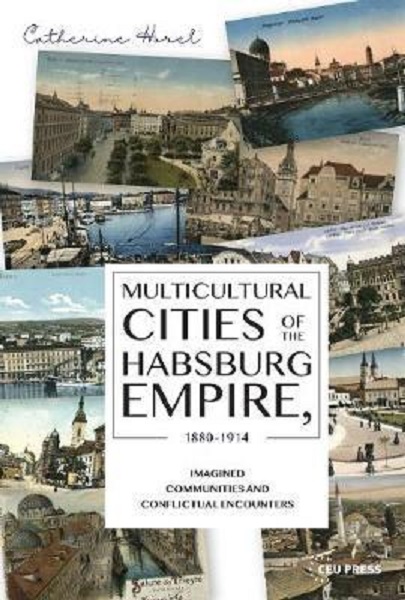Multicultural Cities of the Habsburg Empire, 1880-1914 | Catherine Horel

Detalii Multicultural Cities of the Habsburg
carturesti.ro
910 Lei
Carte straina
Central European University Press
Multicultural Cities of the Habsburg - Disponibil la carturesti.ro
Pe YEO găsești Multicultural Cities of the Habsburg de la Central European University Press, în categoria Carte straina.
Indiferent de nevoile tale, Multicultural Cities of the Habsburg Empire, 1880-1914 | Catherine Horel din categoria Carte straina îți poate aduce un echilibru perfect între calitate și preț, cu avantaje practice și moderne.
Caracteristici și Avantaje ale produsului Multicultural Cities of the Habsburg
- Departament: gaming-carti-birotica
- Ideal pentru pasionații de jocuri, birotică și distracție online.
Preț: 910 Lei
Caracteristicile produsului Multicultural Cities of the Habsburg
- Brand: Central European University Press
- Categoria: Carte straina
- Magazin: carturesti.ro
- Ultima actualizare: 11-11-2024 01:46:56
Comandă Multicultural Cities of the Habsburg Online, Simplu și Rapid
Prin intermediul platformei YEO, poți comanda Multicultural Cities of the Habsburg de la carturesti.ro rapid și în siguranță. Bucură-te de o experiență de cumpărături online optimizată și descoperă cele mai bune oferte actualizate constant.
Descriere magazin:
This book offers a comparative analysis of the societal, ethnic, and cultural diversity of twelve cities in the last decades of the Habsburg Monarchy. The following cities are discussed (by their current names): Arad, Bratislava, Brno, Chernivtsi, Lviv, Oradea, Rijeka, Sarajevo, Subotica, Timioara, Trieste, and Zagreb. This selection aims to counter the disproportionate attention that the largest cities in the empire receive. By focusing on everyday life--associations, schools, economy, and municipal politics--the book escapes from the idealization of the monarchy as a paradise of peaceful multiculturalism as well as from the exaggeration of the conflicts. The author claims that the world of the Habsburg cities was a dynamic space where many models coexisted and created vitality, emulation, and conflict. Modernization brought about the dissolution of old structures but also mobility, the progress of education, the explosion of associative life, and a constantly growing cultural offering.

Produse asemănătoare

Multicultural Cities of the Habsburg Empire, 1880-1914 | Catherine Horel
![]() carturesti.ro
carturesti.ro
Actualizat in 11/11/2024
910 Lei
Produse marca Central European University Press

Transatlantic Central Europe: Contesting Geography and Redifining Culture Beyond the Nation, Hardcover/Jessie Labov
![]() elefant.ro
elefant.ro
Actualizat in 21/12/2024
377.99 Lei

A Century of Populist Demagogues: Eighteen European Portraits, 1918-2018, Paperback/Ivan T. Berend
![]() elefant.ro
elefant.ro
Actualizat in 21/12/2024
248.99 Lei

Life Should Be Transparent: Conversations about Lithuania and Europe in the Twentieth Century and Today, Paperback/Aurimas Svedas
![]() elefant.ro
elefant.ro
Actualizat in 21/12/2024
192.99 Lei

Task for Sisyphus. Why Europe\'s Roma Policies Fail, Hardback/Iulius Rostas
![]() elefant.ro
elefant.ro
Actualizat in 21/12/2024
539.99 Lei

Byzantium After the Nation: The Problem of Continuity in Balkan Historiographies, Hardcover/Dimitris Stamatopoulos
![]() elefant.ro
elefant.ro
Actualizat in 21/12/2024
490.99 Lei

Systems, Institutions, and Values in East and West: Engaging with János Kornai\'s Scholarship, Hardcover/Dóra Piroska
![]() elefant.ro
elefant.ro
Actualizat in 21/12/2024
482.99 Lei